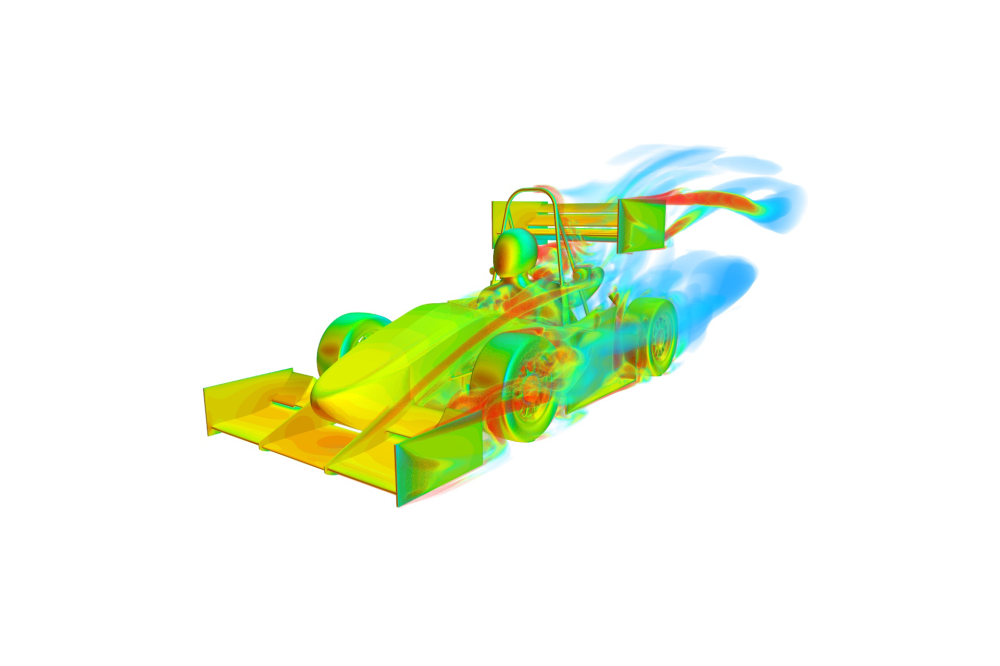Race Car - Aerodynamics
Einleitung
Aerodynamics is one of the key factors in motorsport. This project aims the development and optimization of an aerodynamic package for Formula Student race cars and to analyze different aerodynamic phenomena. For this purpose it is necessary to perform several CFD simulations with millions of controll volumes on a high performance computer.
Before flow simulations can be performed, the physics and relevant phenomena must first be understood. Then, several airfoil profiles are investigated with respect to aerodynamic properties such as drag, downforce, efficiency and flow seperation. After the selection of the airfoil, this project will focus on multi-element wings. The goal is to find very efficient combinations of different airfoils by exploiting different aerodynamic phenomena.
Methoden
We use Star-CCM+ to create the required computational grid and calculate the flow field around the vehicle. The stationary incompressible flow solver based on the Navier-Stokes equation is used. A k-omega-SST model is used for the turbulence modeling. The use of this 2-equation model has the advantage that comparatively large flow problems can be performed in relatively short computation time. In order to keep the number of control volumes adequate, a low-Reynolds approach is only used on the components that are important from an aerodynamic point of view. For the rest of the vehicle, a high-Reynolds approach is chosen. The implemented turbulence model supports hybrid wall functions.
In order to take the rotation of the wheels into account, two different approaches are combined. The rotation of the tire is modeled by specifying the tangential velocity on the surface. The rotation of the rim is modeld by a moving reference frame approach.
Ergebnisse
All the objectives set were achieved within the project. First, the relevant flow phenomena were analysed and characterised. The requirements for the airfoils were then derived from this. Within the two- and three-dimensional simulations, several configuarations were then calculated in order to identify the most efficient configuration.
It has been found that the use of multi-element wings can be used to specifically prevent flow separation. By aligning the elements with each other, a significant improvement in the downforce and drag coefficients was achieved.
Diskussion
The result of this projet was the develompent of a complete aerodynamic package for a Formula Student car. Since the geometry of the vehicle is very complex, several assumptions and simplifications had to be made. For example, the brake disc was simplified and no heat transfer was considered. In addition, the calculation time had to be as short as possible because there was a time restriction for the project. This limited our choice of numerical methods. Time-dependend methods like URANS or a scale-resolving simulation like LES were therefore unfortunately not possible.
In conclusion, it can be said that under the given restrictions, the results completely fulfilled the expectations. The flow phenomena that occur are in line with reference data from the literature.




